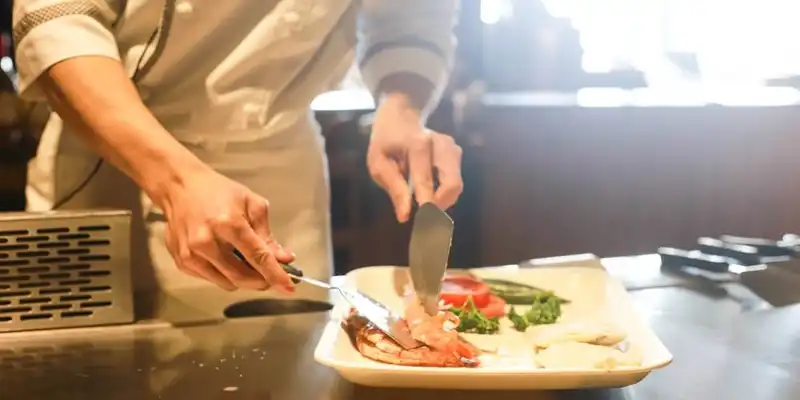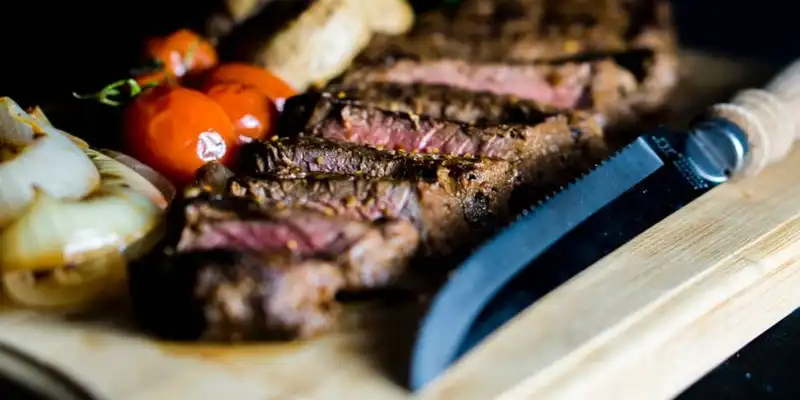The Brief & Complete Guide to Temperature Probes
Introduction
Staying compliant with food safety regulations is not an easy task.
The various parts of the job, including checking that food is cooked thoroughly and keeping the kitchen up to a clean standard, can grow to become overwhelming at times.
Ultimately, this may stop restaurant managers and owners from focusing on the most important part of running a restaurant providing fantastic service and keeping customers happy and coming back for more.
A temperature probe is a vital tool in the arsenal of owners trying to comply with regulations. This is because they help restaurants ensure that they always cook food to an appropriate standard.
When combined with Bluetooth and a full compliance system, they seriously simplify the task of complying with regulations.
In this article, we'll look at how restaurants can use temperature probes as well as the benefits of using one powered by Bluetooth.
What is a Temperature Probe?

A temperature probe is a device that helps those who use it tell the exact temperature of a specific item. A variety of industries use temperature probes including restaurants.
In restaurants, temperature probes are used to check that cooked food has reached a safe temperature, as well as check food is being stored correctly. This lets chefs know the food they serve is safe for customers to eat.
How to Use a Temperature Probe
Temperature probes consist of a metal point and a displayeither analog or digitalthat shows the user the temperature of the item in question.
Chefs use temperature probes by pushing the metal point into the center of the item they want to measure the temperature of. They should place it into the thickest part as this is the part that will cook slowest.
If the item is liquid, for example soup, the user should stir the product before taking the temperature to spread out the liquid evenly. Liquid directly under heat, for example, may be hotter than that on the edge of the pan.
The user then has to keep the temperature probe in place for the required amount of time, which will vary depending on the device. Of course, probes should be kept clean between uses.
When to Use a Temperature Probe

There are several situations when you might want to use a temperature probe. Here is a look at some of them.
Cooking and Reheating
You can use a temperature probe to ensure both freshly cooked and reheated food is hot enough before you serve it. The temperature ranges for different types of food vary.
Keeping Food Hot
Restaurants that hot hold food can use temperature probes to ensure they keep food at a temperature that doesn't allow bacteria to grow. As with heating food, you should check the temperature by inserting the probe into the thickest part of the item.
Chilled Food
Restaurants can use food sensors to check chilled down items that have reached the correct temperate and that they subsequently store the food safely. Restaurants can also use probes during the chilling process to ensure the food's temperature is dropping out of the danger zone fast enough to adhere to regulations.
Why Use a Temperature Probe
There are many reasons why your restaurant should use a temperature probe, mostly revolving around food safety. Of course, proper food safety will benefit the success of your business. Here is a look at some of the reasons for using a temperature probe.
Maintain Food Safety
The biggest reason is to maintain food safety. By checking the temperature of every item you serve, you know that the food is safe for customers to eat. On the other hand, if the temperature of the food falls outside the acceptable range, you know you should take steps to ensure your customers don't get served dangerous food.
Save Time
Temperature probes are an incredibly efficient way of taking the temperature of food items. Most temperature sensors can check how hot food is almost instantly, making using these devices one of the most efficient ways of checking whether food is safe to eat.
Protect Your Business
The restaurant business is notoriously hard to survive in. Outbreaks of food poisoning can have serious adverse effects on your business's reputation and sales, as seen by the reduction in sales and profits at many popular food chains throughout the US after being linked to outbreaks of norovirus, salmonella, and E.coli.
Temperature probes help you protect your business's reputation by reducing the chances of any of your customers becoming sick due to undercooked meats or improperly stored food.
Comply with Food Safety Standards
Food safety standards require restaurants to take steps that reduce the chances of foodborne illnesses from occurring.
Restaurants need to put in place processes that confirm the food they are serving is safe to eat. While these standards take in a variety of different actions, ensuring any food you serve is cooked properly is a crucial part of regulations.
Failing to adhere to food safety standards could result in significant fines. The exact punishment will depend on the size of your restaurant and where it is based.
Consistently Produce Quality Food
Beyond food safety standards, temperature probes also help your restaurant provide a consistent, high-quality experience to your customers. For example, you can use temperature probes to ensure your restaurant cooks steaks how customers like them every single time.
Temperature Probes and HACCP

Hazard Analysis Critical Control Point (HACCP) is a method of managing food safety risks.
Implementing HACCP systems can reduce the chances of serving a customer with unsafe or hazardous food.
A significant part of HACCP is defining hazards in your businesses as well as the likeliness of these hazards occurring. Once they have identified risks, restaurants must put in place controls that address these problems and create processes to ensure they don't happen.
A major hazard for restaurants is serving food that either isn't cooked correctly or is unsafe because it hasn't been stored at the correct temperature.
By introducing temperature measuring processes using temperature probes, restaurants can create HACCP compliant procedures for serving food.
You can read more about putting in place HACCP compliant procedures in our explainer article on HCCP and our guide to developing a quality HACCP system.
Regular Temperature Probe vs Bluetooth Temperature Probe
When you take the temperature of a particular item with a regular temperature probe, the temperature of the food is shown on the device. This allows you or an employee to confirm the meat is at the correct temperature. If the temperature is outside the safe range, staff members will have to
a. Recognize the temperature as being in the unsafe range for that particular type of food.
b. Know which action to take to maintain food safety standards.
When you use a regular temperature probe, employees will also have to manually record the temperature of the item if your restaurant has processes in place regarding recording temperature readings.
While this isn't a wrong way of doing things, it does require employees to take several manual steps that could potentially go wrong.
Like a regular temperature probe, Bluetooth probes allow employees to check the temperature of particular items quickly and take steps to check food is safe. Where they improve upon conventional sensors is in the way that they automate much of the process.
Here are some of the benefits of a Bluetooth temperature probe
Automatic Sharing with an App or Software Platform
Bluetooth probes automatically share the result of the temperature check with an app or software platform, meaning employees no longer have to record readings manually. This eliminates the potential for mistakes due to human error.
Catch Issues Instantly
Once it has been shared, the software will analyze the reading and let the employee know if the food is cooked to a safe standard or not. This cuts out the chance of employees making mistakes due to not realizing the food has not reached the correct temperature or merely forgetting the proper range for the item in question.
Map Out Next Steps
If the app notices the food isn't within the correct range, the software will alert the employee to the issue and map out the steps they should take. These next steps are standard operating procedures previously laid out by the management team.
Shared with All Devices
Cloud-based apps and software mean that all inputs recorded on one device are automatically shared across all devices with the app installed. This is the case no matter how many employees, devices, or locations you use. If critical issues arise, the software will immediately notify those in charge who have access to the app.
In-Depth Reporting
By automatically tracking tasks like this, managers or restaurant owners get an easy-to-view detailed overview of how their business is performing. If they notice there are places where issues keep arising, they can take steps to sort out the problems before they occur.
Complete Food Safety System
Zip HACCP is a complete solution that allows restaurant owners to manage food safety and build HACCP systems.
It allows those in charge to create and manage food safety checklists, as well as integrate these with a Bluetooth temperature probe to quickly and easily check that foods are cooked to the correct standard.
Bluetooth connectivity means the Zip HACCP app can tell as soon as a problem arises and prompt the person using the device to take steps to correct the problem. This reduces the chances of your restaurant breaking HACCP guidelines.
To find out more about how Zip HACCP can help your restaurant build food safety compliant procedures, head over to the features section of our website.












